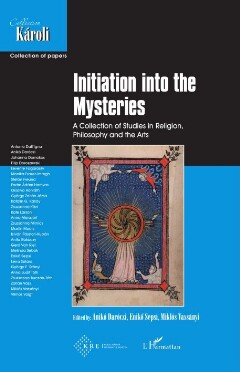
Page 302 [302]

OCR
ANITA RÁKÓCZY the coffin was. A high sense of remorse might have led Hamm to perform and conduct this spiritual exercise, praying, which is unlike him. As Bryden points out, “when in Fin de partie Clov and Nagg are prompted by Hamm [...] to join him in the attempted contact with the Deity, the experiment proves futile. All report blank encounters, and abandon their attitudes of prayer.” Hamm’s openly blasphemous remark, “the bastard! he doesn’t exist,” is “immediately rendered provisional, [...] by Clov’s extension of timeframe, ‘not yet’, which restores God to a position of waiting in the wings.””? However, the traditional way of reaching out to God does not function anymore; the prayer in Endgame is conducted in an entirely echoless space, where God has abandoned mankind. As Andräs Visky points out, “God has gotten beyond the boundaries of addressability; human language does not remember the means of approaching the Divine anymore.””* Visky argues that the sacred announces itself exclusively through blasphemy and is altogether unrecognizable. His views apply to Beckett’s denials of the divine in particular, although the search for the sacred in Beckett’s dramatic writing remains to be examined elsewhere. This paper goes so far as to document his various forms of negation and, at the same time, his constant attacks and ceaseless textual and visual representations of the divine, which are expressive of the impossibility of letting go of God, or the absence of God. As Bryden argues, “this cursing of God is rarely countervailed in Beckett’s writing by the blessing of God. Yet, as the Book of Job demonstrates, cursing provides a kind of continuity of engagement. It represents sparks and interferences in the current, but not cessation. Beckett’s people seem, despite their resentments and wrestlings, unable to stamp out the God-hypothesis definitively.” In Beckett’s Film, written in the spring of 1963 and shot, starring Buster Keaton, in New York in 1964 under the direction of Alan Schneider, the main character, O, the Object, takes the necessary precautions to avoid being observed or seen by anybody, especially by E, the observing Eye, which follows him everywhere like a shadow. E of course turns out to be the same person as O. One of O’s main motives throughout the film is to avoid the encounter with his own self. Beckett built the film around George Berkeley’s thesis, esse est percipi, to exist is to be perceived. Therefore, O’s greatest desire is to be entirely unseen, or in other words, to be gone. Arriving at his mother’s unoccupied flat, O aims to eliminate all external, inquisitive disturbances; he draws the window-curtains, but the fabric has eye-socketlike holes; then he covers the mirror, locks out the dog and the cat, whose °3° Bryden, Samuel Beckett and the Idea of God, 116. 4 Andras Visky, Art Vital. The Theatre of Prophet Ezekiel, Conference paper delivered on 8 May 2015, Religion and Art Conference, Karoli Gaspar University of the Reformed Church in Hungary. 5 Bryden, Samuel Beckett and the Idea of God, 131. + 300 + Daréczi-Sepsi-Vassänyi_Initiation_155x240.indb 300 6 2020.06.15. 11:04:25
structurelles
Custom
Image Metadata
- Largeur de l'image
- 2074 px
- Hauteur de l'image
- 3078 px
- Résolution de l'image
- 300 px/inch
- Taille du fichier d'origine
- 1.31 MB
- Lien permanent vers jpg
- 022_000071/0301.jpg
- Lien permanent vers OCR
- 022_000071/0301.ocr
